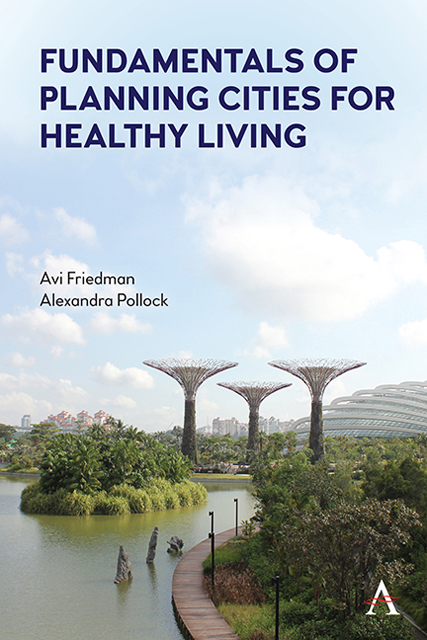Book contents
- Frontmatter
- Contents
- Preface
- Acknowledgments
- Chapter 1 The Broad View
- Chapter 2 Form, Function, and Public Health
- Chapter 3 Planning for Active Mobility
- Chapter 4 Green Open Spaces
- Chapter 5 Active Life in Winter Cities
- Chapter 6 Socializing in Communities
- Chapter 7 Food Production and Distribution
- Chapter 8 Urban Design for Healthy Aging
- Chapter 9 Public and Multi-Unit Residential Buildings and Public Health
- Chapter 10 Healthy Residences
- Chapter 11 Equitable Health Promotion
- Bibliography
- Bibliography for Case Studies
- Illustrations’ Credits
- Index
Chapter 10 - Healthy Residences
Published online by Cambridge University Press: 10 January 2023
- Frontmatter
- Contents
- Preface
- Acknowledgments
- Chapter 1 The Broad View
- Chapter 2 Form, Function, and Public Health
- Chapter 3 Planning for Active Mobility
- Chapter 4 Green Open Spaces
- Chapter 5 Active Life in Winter Cities
- Chapter 6 Socializing in Communities
- Chapter 7 Food Production and Distribution
- Chapter 8 Urban Design for Healthy Aging
- Chapter 9 Public and Multi-Unit Residential Buildings and Public Health
- Chapter 10 Healthy Residences
- Chapter 11 Equitable Health Promotion
- Bibliography
- Bibliography for Case Studies
- Illustrations’ Credits
- Index
Summary
The home is an important locus of personal health, even in times without stay-at-home orders such as during the COVID-19 pandemic. Chapter 9 discussed design strategies to make public buildings tools for improved mental and physical well-being. This chapter investigates features that help people live a healthy life in their homes. It begins with a definition of specific strategies that can be implemented to maintain indoor air quality (IAQ) at a healthy level. Next, it describes how building materials should be selected to avoid pollution and other health risks. Then, the authors transition into a discussion about thermal comfort and the relationship between air temperature and health. The final section introduces several topics that have a more indirect effect on human health, including visual comfort and interior design. The chapter concludes with a description of a project in Seattle, Washington, United States.
10.1 Indoor Air Quality
The energy crisis of the 1970s affected trends in building design, leading to the development of thermally insulated “air-tight” buildings that helped reduce consumption. However, the lack of proper ventilation in some of these buildings has created poor IAQ conditions. A study conducted in Toronto, Canada revealed that in 20 percent of dwellings, polluted indoor air and poor IAQ caused a variety of respiratory problems (Canada Mortgage and Housing Corporation (CMHC) 2010; Bas 2004). According to a World Health Organization report (World Health Organization (WHO) 2010), indoor air pollution is responsible for 2.7 percent of the global transmission of disease. The report also estimated that up to 30 percent of all new and remodeled buildings worldwide may have problems with IAQ.
The introduction of composite wood products, stain-resistant synthetic carpets, thermally efficient rigid insulation boards, cleaning agents, and furnishings has also broadened home design options. However, many of these products tend to emit odors and can even release toxic compounds into the air (Figure 10.1). These elements are commonly emitted at a comfortable room temperature of 70ºF (21ºC) (Nugon-Baudon 2008). If the home is not constructed with effective ventilation, the concentration of harmful pollutants can compromise the physical and psychological well-being of the occupants. The health effects of poor ventilation include oxygen depletion, allergies, nausea, and even cancer (American Lung Association 2020).
- Type
- Chapter
- Information
- Fundamentals of Planning Cities for Healthy Living , pp. 121 - 136Publisher: Anthem PressPrint publication year: 2022

